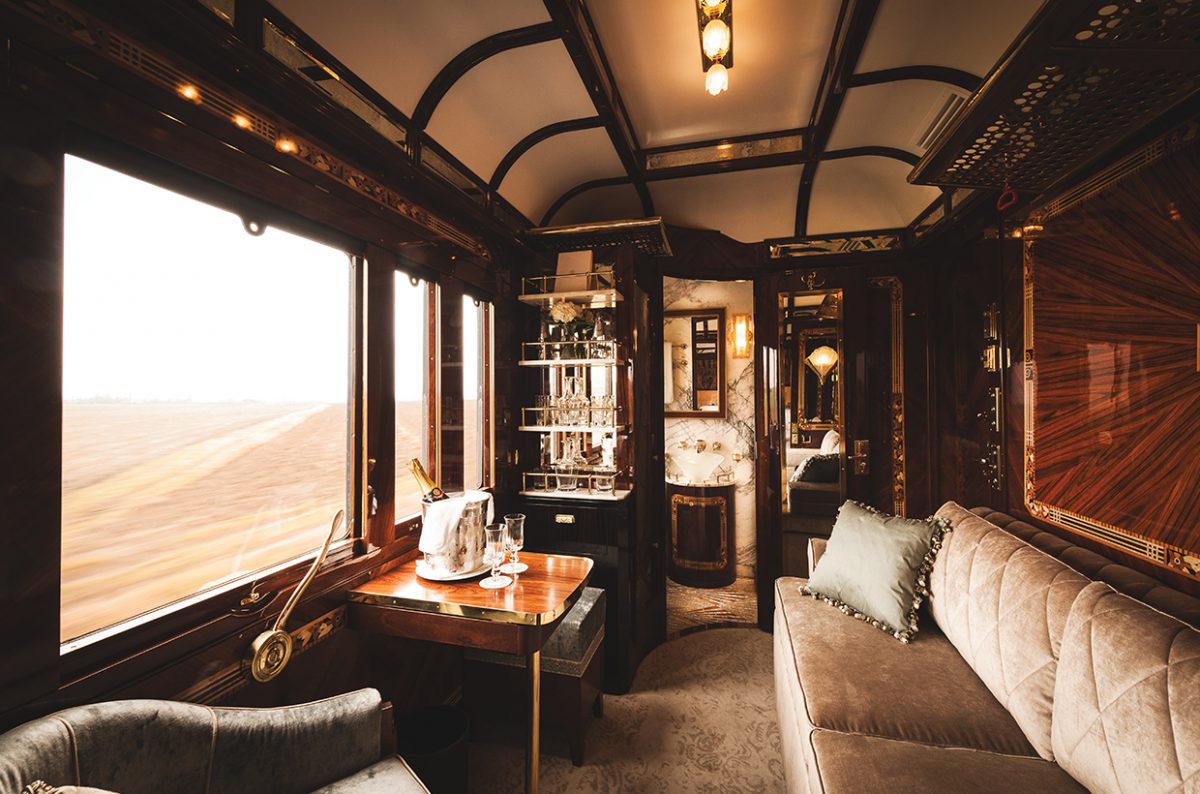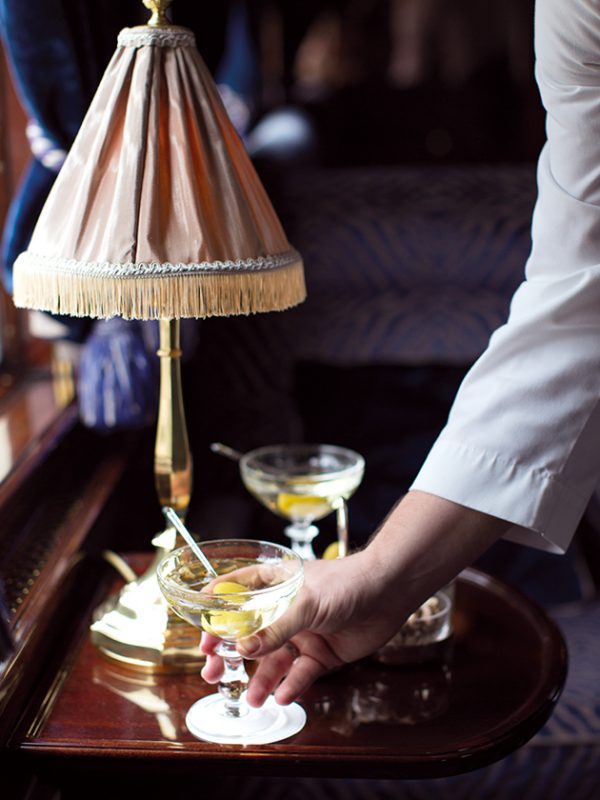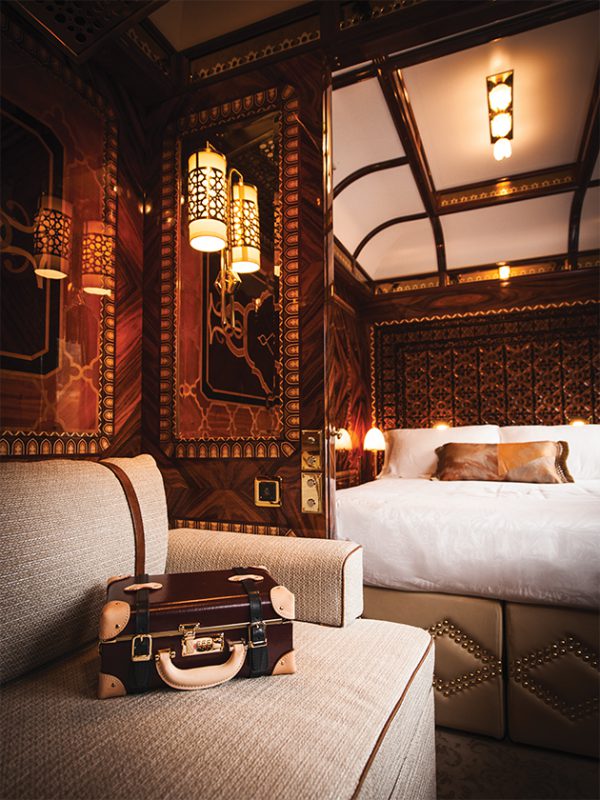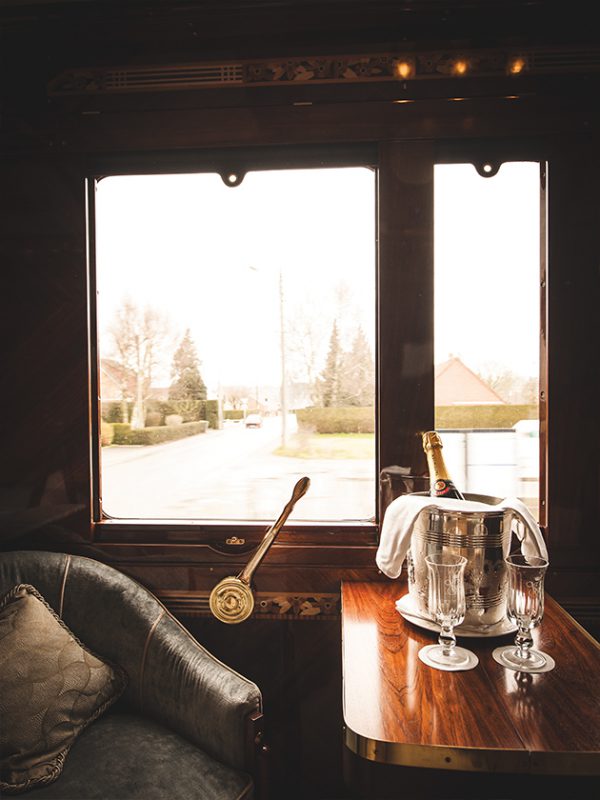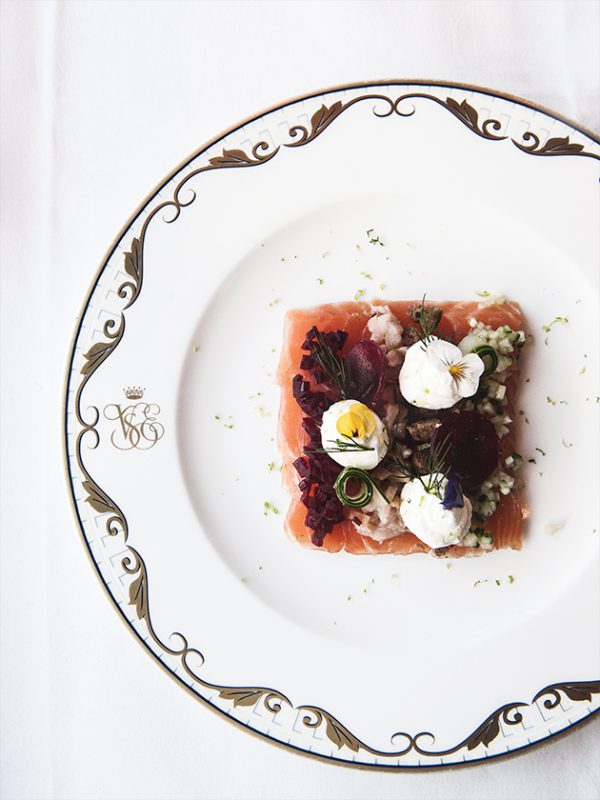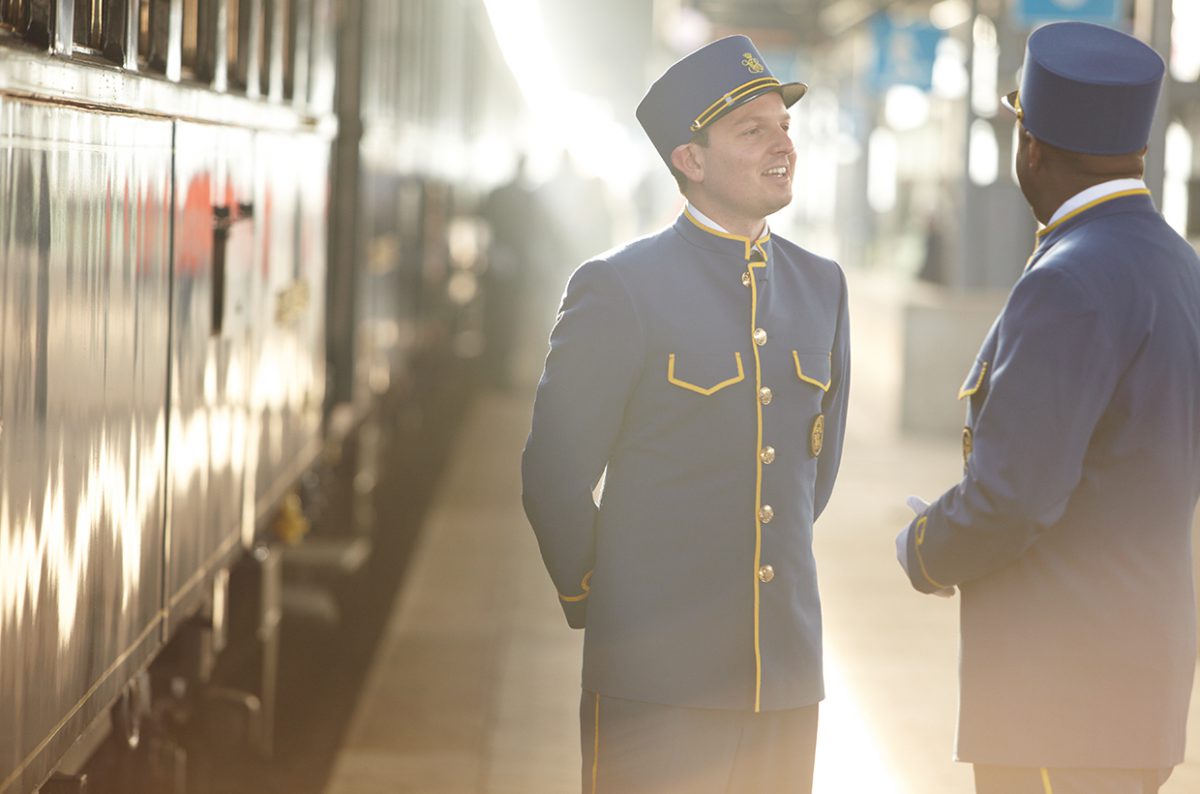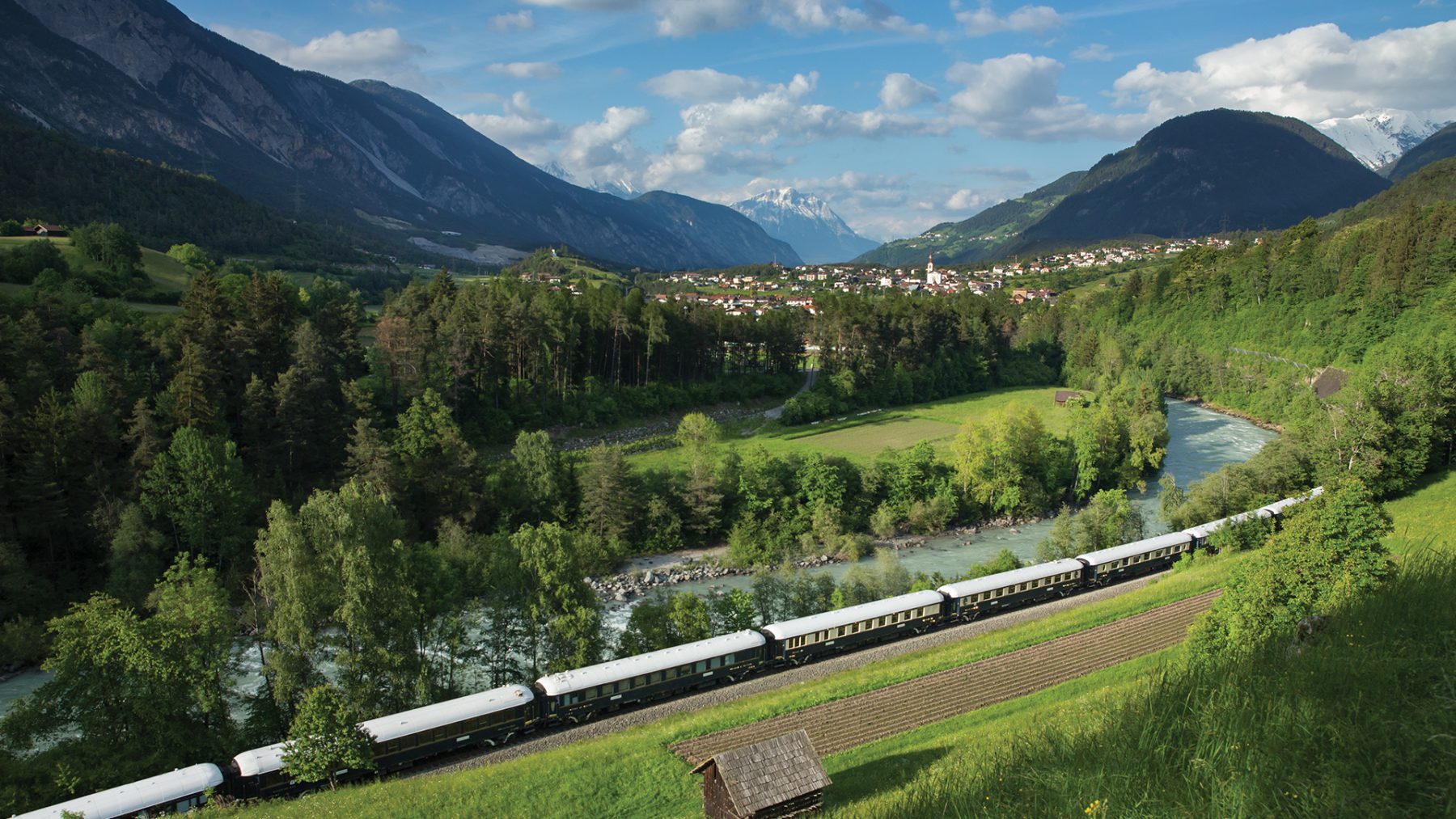Retro glamour, on the go by Petra Winter | 6th March, 2020 | Personalities
On the Orient Express – meticulously restored to its 1920s glory – every carriage is a masterpiece. A one- or multi-night journey is the most opulent way to travel from March to November, when the rolling luxury hotel links up some of Europe’s most beautiful cities. We chose the classic Venice–London route. Since then, it’s been hard to get this epic journey out of our minds.
„It was five o’clock on a winter’s morning in Syria. Alongside the platform at Aleppo stood the train grandly designated in railway guides as the Taurus Express. It consisted of a kitchen and dining car, a sleeping car and two local coaches ….” Wait a minute: the Taurus Express? Are we in the right movie? Well, yes and no. If you haven’t picked up Agatha Christie’s book Murder on the Orient Express in a while, you may have forgotten that her legendary crime novel begins not in Istanbul, but rather in Aleppo. Only in Istanbul do her protagonists, namely private detective Hercule Poirot, board the exquisite luxury train known as the Orient Express.
We’re beginning our own railway adventure in the Venice Lagoon, at the wonderfully vintage Hotel Cipriani on the island of Giudecca. Shortly after settling into our suite with a view of the Piazza San Marco, we head to one of the hotel’s historical annexes for a meal at a lavishly decorated table. Sipping on the signature Bellini cocktails, we get to know the travelers with whom we’ll depart Venice’s Santa Lucia station the next morning for a London-bound adventure aboard the Venice Simplon-Orient-Express (as it’s known today), which – like the Cipriani Hotel – is owned by the Belmond Group. That bit of information just as an aside.
When the first guests were served here around a hundred years ago, the bar car was the heart of the train – and remains so to this day.
Getting around in Venice is usually a chore, but every aspect of this journey is delightful. The next morning, we find ourselves on the hotel’s own wooden boat alongside JJ Martin, an American designer who lives in Milan, excitedly discussing what awaits us on our journey. Our expectations are high, to put it mildly: Christie’s crime thriller – as well as its numerous cinematic incarnations – have cemented the Orient Express’s reputation as a synonym for luxury travel. Our question today is: Will the historic carriages that have been crossing the continent for 100 years live up to the legend?
The Orient Express has been through a lot: At first, it was the travel mode of choice among refined society; then it became a military hospital in times of war. In the aftermath of World War II, it fell into disrepair and was abandoned. Then, in 1977, American entrepreneur James B. Sherwood purchased two original cars at auction, and little by little, tracked down the others, which at this point were scattered around the globe. With substantial monetary investment – and plenty of love and care – he had the coaches restored with plans to have the trains back on their historic tracks by 1982.
These days, from March to mid-November, you can choose among different routes, from the two-day classic Venice–London route to the newer Paris–Berlin route, as well as the longer five-night tour from Paris to Istanbul. Between late November and February, the wagons are serviced: Mahogany wood walls are polished, mother-of-pearl inlays are restored and textiles are refreshed. At the train station in Venice, the uniformed stewards, conductors, kitchen crew, and train chef await us; our luggage has already been moved into our cabins. The sleeping car conductor introduces us to our quarters, which comprise approximately five square meters: on the right, behind a double door, is the washing basin; on the left is a sofa upholstered with Liberty fabrics that will be transformed into a bunk bed in the evening; and by the window is a small table for enjoying breakfast. As soon as we sit down, the steward brings us two glasses of champagne with a tin of caviar. Lunch will begin at 2:00 p.m., we learn over the loudspeaker, so we have some time to enjoy the amenities of our gorgeous mahogany den – savoring the view as we cross the bridge from Venice to the mainland – and to explore the length of the train, as well.
A dress code is strictly observed on the train: As soon as the sun sets, passengers don evening gowns and tuxedos.
The Venice Simplon-Orient-Express can accommodate 179 guests in 84 double and five single cabins, as well as six of the new Grand Suites. There’s also a piano bar, a small boutique and three restaurant cars. The route takes us through Switzerland, the Gotthard Tunnel, Nancy and Paris before we reach the northern French port city of Calais, where we will transfer to a luxury coach bound for England via the Channel Tunnel. Once we’ve crossed, the beautiful British Pullman – another of the Belmond Group’s high-end trains – will pick us up at an exclusive station and take us to London, our end destination.
Not only is the interior of the Venice Simplon-Orient-Express pleasantly retro, but also the dress code. During the day, the look is “smart elegant,” but in the evening, black tie is required – that is, gowns and tuxedos. As we sit down to lunch, it becomes clear why there’s a dress code in place: The tables in the dining car are gorgeous, decked with heavy, starched linen, Lalique glasses, fine porcelain, and weighted silver cutlery. Pascal Deyrolle, the train’s general manager, has also joined our table, taking a seat right next to Martin. While the waiters, gliding seamlessly among the tables, provide us with wine, champagne and exquisite food, he shares a few Orient Express legends: Like the one about Sleeping Car #4325, in which King Carol II of Romania escaped his captors in 1940 along with his mistress, or Sleeping Car #3544, which was converted into a brothel during wartime.
We’re curious to know whether the shoot for the 2017 film adaptation of Murder on the Orient Express – directed by Kenneth Branagh and starring Branagh, Michelle Pfeiffer, Johnny Depp and Judi Dench – took place on the original train. “The setting, thank God, was recreated – mostly through visual effects,” explains Deyrolle with a laugh. “That way, nothing could be destroyed.” After lunch, the chef de cuisine gives us a peek into his kitchen – it’s amazing how little space the chefs use to prepare the multi-course menus. Later that evening, after dinner, the bar car awaits us. A three-piece jazz band is playing, and some passengers are dancing among the velvet armchairs. An impromptu karaoke session breaks out, with Pete Denton, a member of the British band The Kooks, and his lovely wife Portia Freeman on the mic. We request “Bohemian Rhapsody,” and everyone bursts into song: After all of the cocktails, it’s the perfect moment to let loose. It’s not until three in the morning that we retire in our bunk beds, and – snuggled up in the provided pajamas – fall into a peaceful, restful sleep. At some point during the night the train stops in Nancy, we’ll later learn, but even that slight jolt couldn’t rouse us from our deep slumber. We arrive in Paris the next morning in style, looking forward to freshly delivered lobsters for lunch on board – yet another example of this modern-day Orient Express living up to its storied reputation.
